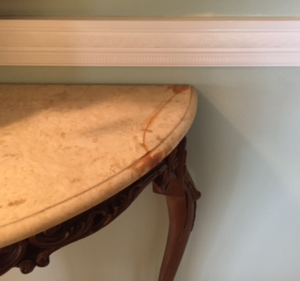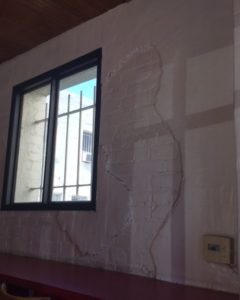
Kintsugi. It’s not a word that comes up very often, especially when it comes to contemporary decorating. The concept or spirit of kintsugi might be a little more recognizable, which is finding beauty in the broken, dented, cracked and shattered. It’s not especially popular but it’s a beautiful concept that originates from Japan.
I see a lot of people obsessed with the idea that something needs to be new or perfect. What’s interesting to me is that I don’t even think they realize they feel this way. I can’t tell you how many times I’ve heard someone say how our city, Los Angeles, has no history and all the buildings are torn down only to later talk about the need for a remodel. It’s something I’ve noticed for a long time and something I’ve put a lot of thought into.
For me, I get a tremendous thrill out of one-of-a-kind things or when something can’t be replaced. Often that means loving something with flaws and all. The Japanese word kintsugi is something I keep close to my heart. Originally it referred to the art of fixing pottery, usually with a fine metal such as gold, silver or platinum. In fact, kintsugi loosely translates as “to patch with gold.” The idea was to incorporate the cracks into the pottery’s aesthetics rather than hiding them—in essence, the cracks and repair become an integral part of the piece’s history.
These days, the original Japanese concept has broadened to include more than fixing something with gold or a precious metal. That still works, but it’s not mandatory. As long as the piece is fixed, patched, glued or whatever it takes to save it–it’s usually worth the save.
The meaning of kintsugi has since broadened beyond pottery and precious metals. Now it means finding the beauty in the unique, the flawed and the broken. Instead of throwing something out, the crack or dent or flaw or whatever is highlighted and becomes celebrated. Not only does this keep items out of the landfill, but it also becomes a unique and often special element for a home.

Kintsugi can apply not only to plates and pottery, but to built-ins, floors, walls—you name it—and creates a dialog between the past and present. Because most people aren’t interested in the flawed, I don’t usually see it but when I do, I love it. In my own home, we have a marble table that was broken by my brother’s puppy, oh, a million years ago. Admittedly, the guy who repaired didn’t do the best job but it’s a part of the table’s history just the same.
Another time I was eating lunch in an old building in Westwood and was delighted to see that part of the wall’s plaster had fallen away and the original brick was peeking through. Instead of hiding it, when the restaurant painted the walls they just incorporated it. Now it’s part of the building’s unique story.
Rather than tearing something out or repairing it so that flaws no longer show, the spirit of kintsugi may be a fun option when restoring your own home. It might even be better than new!
